
You don’t need to rough it to enjoy some fresh air and serenity
By Amy Alipio
IT’S GOOD TO GET OUTSIDE. Spending time in nature can lead to “improved health, quality of life, and well-being” in older people, according to the International Journal of Environmental Research and Public Health. But sleeping bags and outhouses can be less than age-friendly. The solution is glamping—glamorous camping. In 2023, cabin and glamping usage doubled from 2014, according to Kampgrounds of America.
Set on platforms, glamping tents have beds outfitted with linens, and sometimes in-unit bathrooms and climate control. Tiny homes and boutique RV parks also can fall under the glamping umbrella. “Glamping is good for people who don’t want to go through all the trouble of setting everything up like they did 20 years ago with the kids,” says Annette Ostrander-Fenske, cofounder of Colorado’s Rustic Rook Resort.
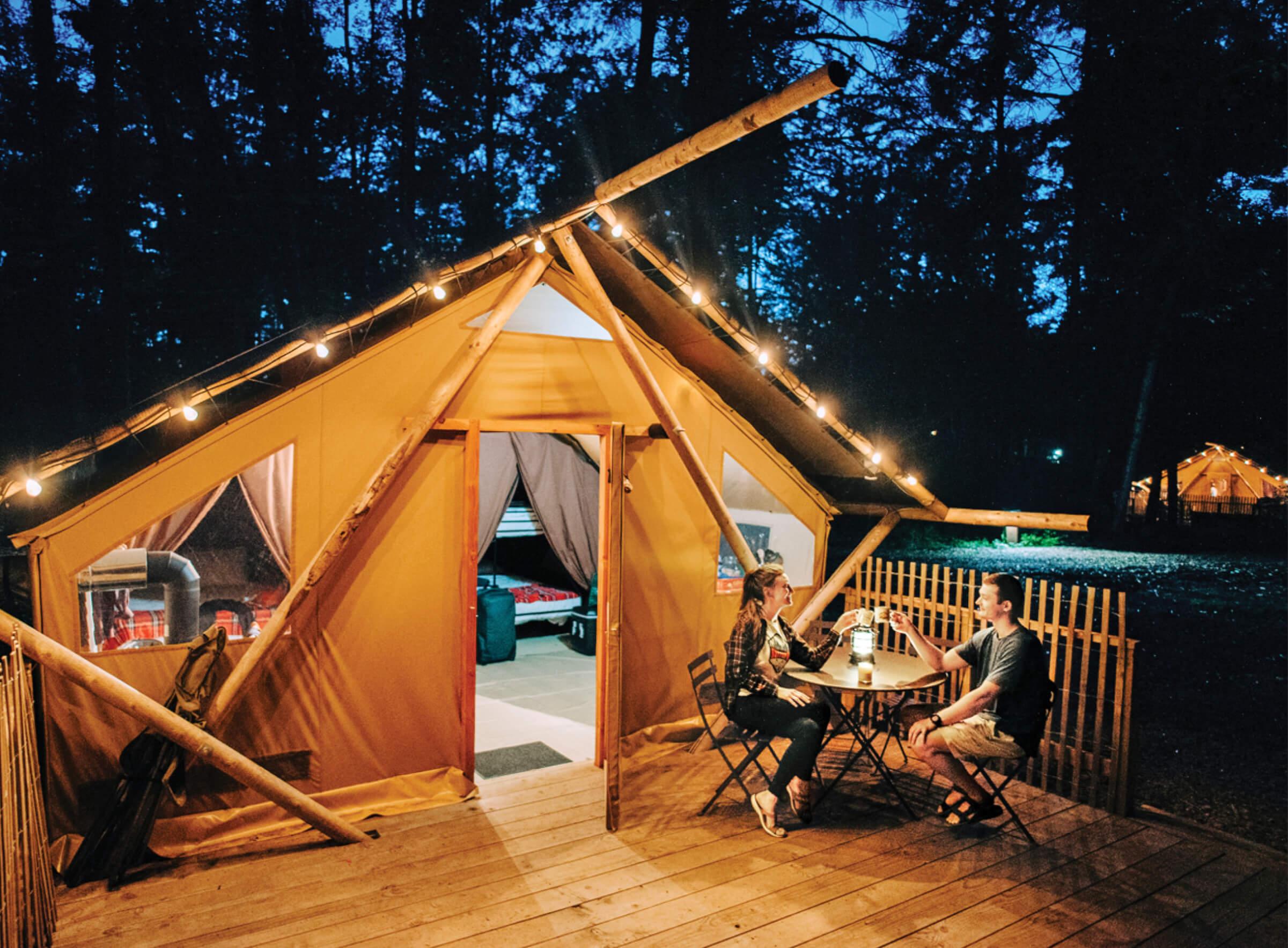
Huttopia Lake George-Adirondacks

TYPICALLY LESS crowded than their national cousins, state parks can be equally scenic. One of the most popular is South Dakota’s Custer State Park. Its annual Buffalo Roundup during the last week of September attracts some 20,000 visitors. But other weeks provide a quieter experience, where you can spot prairie dogs and pronghorn and bighorn sheep. Cabins at the park’s resort (from about $265 per night) are scattered throughout four lodge areas, with amenities ranging from kitchenettes to just a fridge and microwave.
Presque Isle State Park in Pennsylvania surprises visitors who may not realize the state has a shore. This peninsular nature reserve features swimming beaches along Lake Erie. Pettinato Beach provides an accessible ramp to the water’s edge; be sure to catch the glorious sunsets. An important pit stop for birds on the Atlantic flyway, Presque Isle also supports communities of purple martins and piping plovers. Visitors can head seven miles out to the camping cabins and yurts at Presque Isle Passage, a private campground. Guests provide their own bed linens, but amenities can include in-unit bathrooms and kitchen areas. Cabins start at about $120 per night.
Adirondack Park in upstate New York sprawls across some 3,000 lakes and ponds and 2,000-plus miles of hiking trails, one of the largest protected wilderness areas east of the Mississippi River. In the Lake George area, Huttopia Lake George–Adirondacks tucks roomy glamping tents—inspired by the domiciles of French Canadian trappers—amid tall pines and beech trees. To maintain a feeling of seclusion, cars are parked in areas away from tents; wheeled carts help transport your gear to your forested hideaway. Glamping tents start at about $100 per night.

Soulful-eyed, seagrass-grazing manatees are the undeniable stars of Florida’s Manatee Springs State Park. In cooler weather particularly, they gather in large numbers around the park’s warm springs. Keep an eye out for them from the 800-foot-long accessible wooden boardwalk winding through the cypress forest overlooking the springs. In any season, visitors to the park can hike 8.5 miles of trails or kayak in startlingly clear waters. Glamping at Manatee Springs offers queen-bed tents (about $100 per night) that sport a beachy aquamarine theme and include cooling and heating.
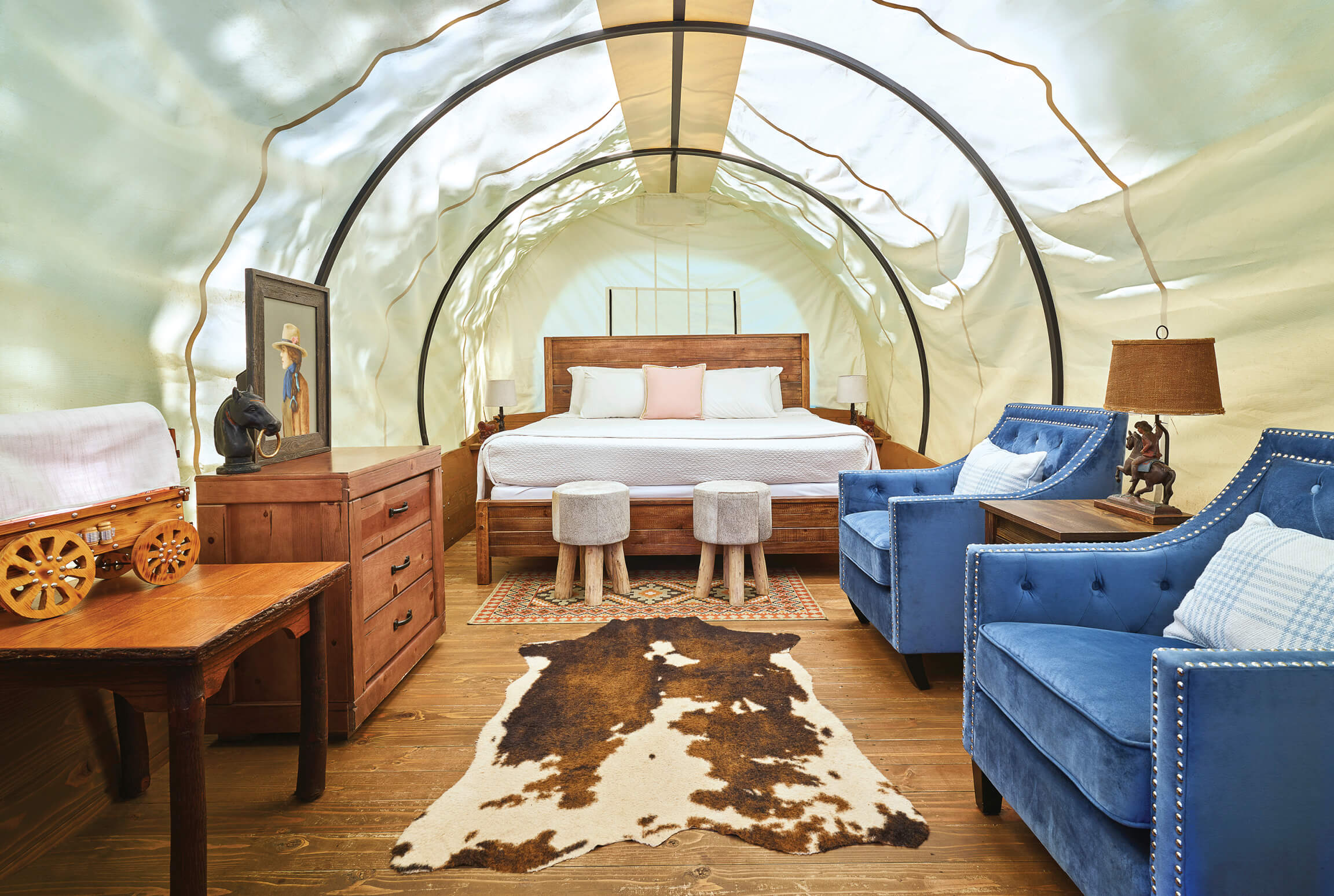
Conestoga wagon at Sandy Pines Campground

SOME NATURE spots seem obvious locations for glamping sites—and others are a surprise. Take Governors Island in New York City, a 10-minute ferry ride from lower Manhattan. The car-free former military base has landscaped lawns for picnicking, a 2.2-mile perimeter trail for walking or biking, and a 15,000-square-foot spa. “It’s like a break from the intensity of New York while still staying in New York,” says visitor John O’Boyle of Westfield, New Jersey, who writes the blog The Empty Nest Explorers with his wife, Debbie. She says Collective Retreats’ tent houses on the waterfront are “hidden in plain sight”—because everyone walking by is looking at the epic view of the mountain range of New York City skyscrapers and its constellation of city lights. Tents run from about $325 per night.

Sandy Pines Campground in Kennebunkport, Maine, features tents, cottages and “unique retreats,” including a Conestoga wagon. Stays start at about $120 per night. Nearby, go tide pooling at white-sand Goose Rocks Beach and hiking and birdwatching at Rachel Carson National Wildlife Refuge. The Clam Shack serves up lobster rolls, but don’t forget Maine blueberries at farm stands.
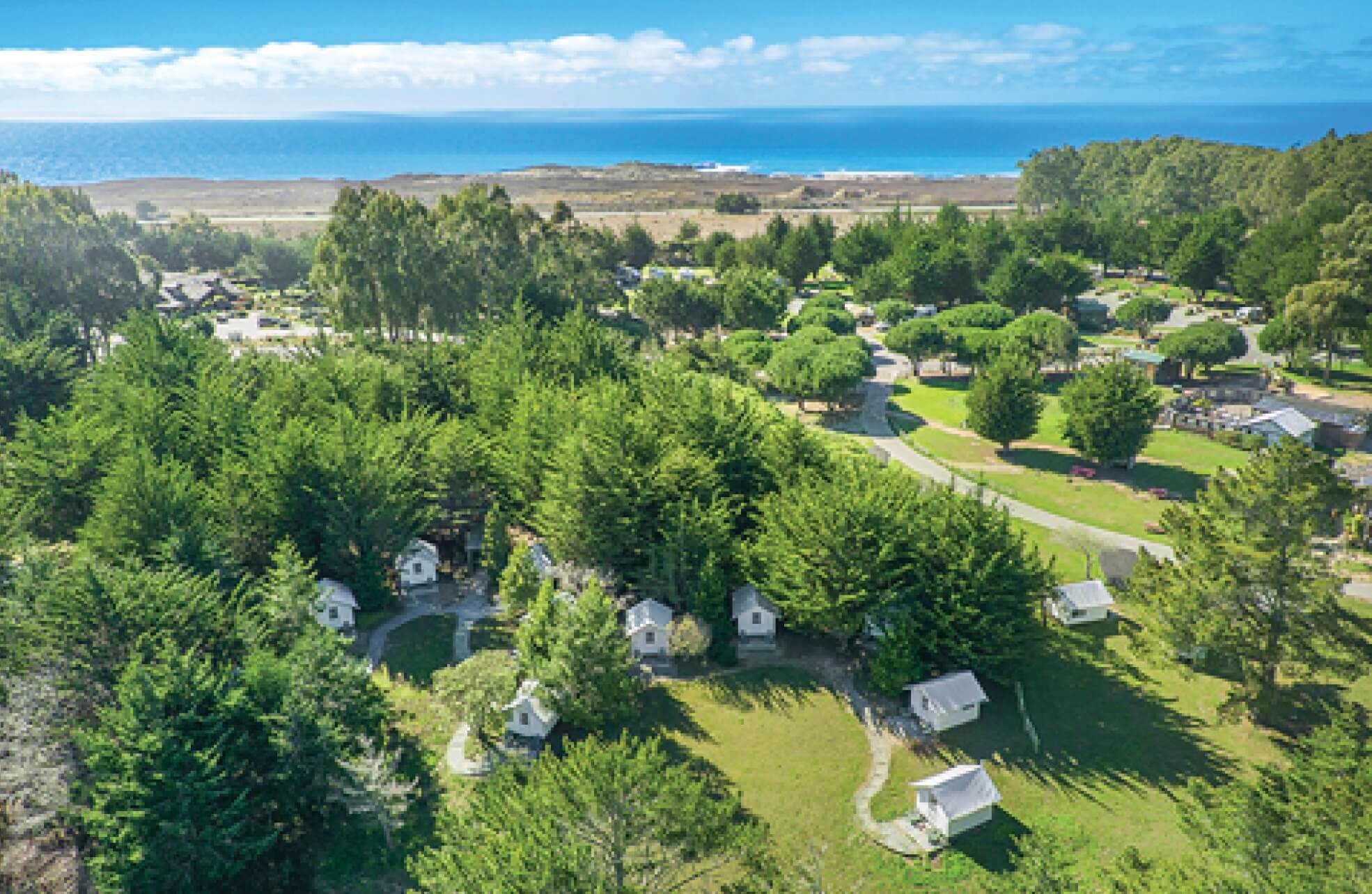
Costanoa glampgrounds in Pescadero, California
The wild beauty of the California coast provides the backdrop to glamping bungalows at Costanoa resort in Pescadero, California, about an hour south of San Francisco International Airport. For the best ocean vistas, opt for a lighthouse tent bungalow (some are ADA accessible) or a coastal cabin. Nearby, hike the easy three-mile trail to Franklin Point, with its views of historic Pigeon Point Lighthouse (also keep watch for glimpses of whales). Glamping starts at about $155 per night.

AutoCamp at Joshua Tree
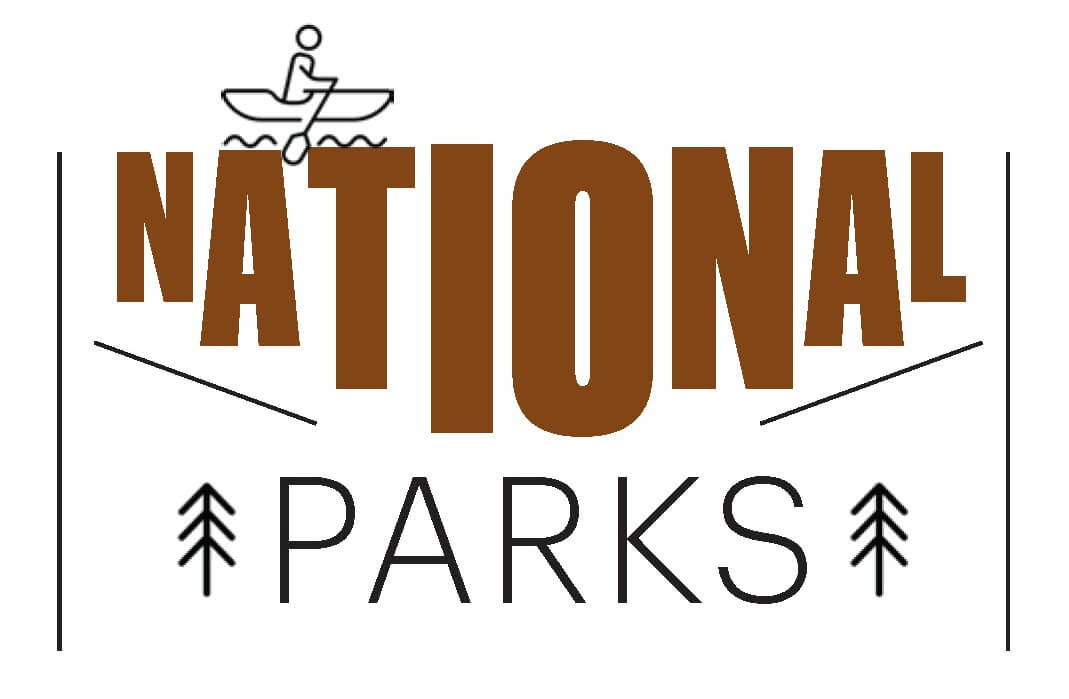
SOME OF America’s most iconic lodgings can be found in national parks: Yosemite’s Ahwahnee Hotel and Yellowstone’s Old Faithful Inn. These put you in the middle of treasured natural settings and are in high demand, so book early—about a year in advance.
Another option: Consider less-trafficked national parks, such as Lake Clark National Park and Preserve in Alaska, accessible only by plane or boat. Here you can get relatively close to bears without much fear. Visit Nat Hab’s Alaska Bear Camp, a 15-acre private area within the park, where brown bears spend their days grazing on nutrient-rich sedges; foraging for salmon, clams and berries; nursing their cubs; and napping—all without paying much mind to the people. That’s because travelers to Bear Camp learn about giving the animals their space and not providing any sources of food. And when you head in for nightly human hibernation, enjoy a “tent cabin” on a raised platform, outfitted with twin beds and space heaters. The grounds also include a resident chef and naturalists who serve as guides. Six-day itineraries start at about $7,000.

Nat Hab’s Alaska Bear Camp
Travelers also often overlook Virgin Islands National Park on St. John, which features ecotents and concrete cottages at Cinnamon Bay Beach and Campground. From Red Hook in St. Thomas, take a 20-minute ferry ride to St. John, then grab a cab for the 15-minute drive to Cinnamon Bay. The reward is a white-sand beach—the longest on the island—and turquoise Caribbean waters. Tents and cottages are equipped with queen beds, towels and fans (but no AC). There are four shared bathhouses, each with a separate accessible toilet and shower. Stays start at about $190 per night.

Rustic Rook Resort in Mosca, Colorado
The tallest sand dunes in North America—towering up to 750 feet—greet visitors to Great Sand Dunes National Park and Preserve in southern Colorado. Guests staying at one of Rustic Rook Resort’s glamping tents, pitched about 20 miles from the park, can view the dunes in their geographic context, nestled in front of some of the 14,000-foot mountain peaks called the “fourteeners.” “The sand dunes kind of look small compared to the mountains,” says Ostrander-Fenske, the resort’s general manager. Guests can choose from glamping tents (some with their own bathrooms), travel trailer campers (with AC and heating), or repurposed grain silos. The climate-controlled silos feature a kitchen on the main level and stairs that lead to a bedroom loft with a bathroom and windows looking onto a sandy vista. Glamping tents start at about $165 per night.
Joshua Tree National Park, in southern California, presents another otherworldly desert landscape, accented by cacti, creosote bushes and gnarly Joshua trees so distinctive they inspire rock stars (U2, of course). “There are so many great hikes in the area,” says glamper Sean Bergara of Palm Springs, California. About a 10-minute drive from the park gates, AutoCamp at Joshua Tree offers glamping in chic silver Airstream campers and in contemporary cabins with kitchenettes, separate bedrooms and walk-in showers. Stays start at about $170 per night.

Fireside Resort in Jackson Hole, Wyoming, near Grand Teton National Park
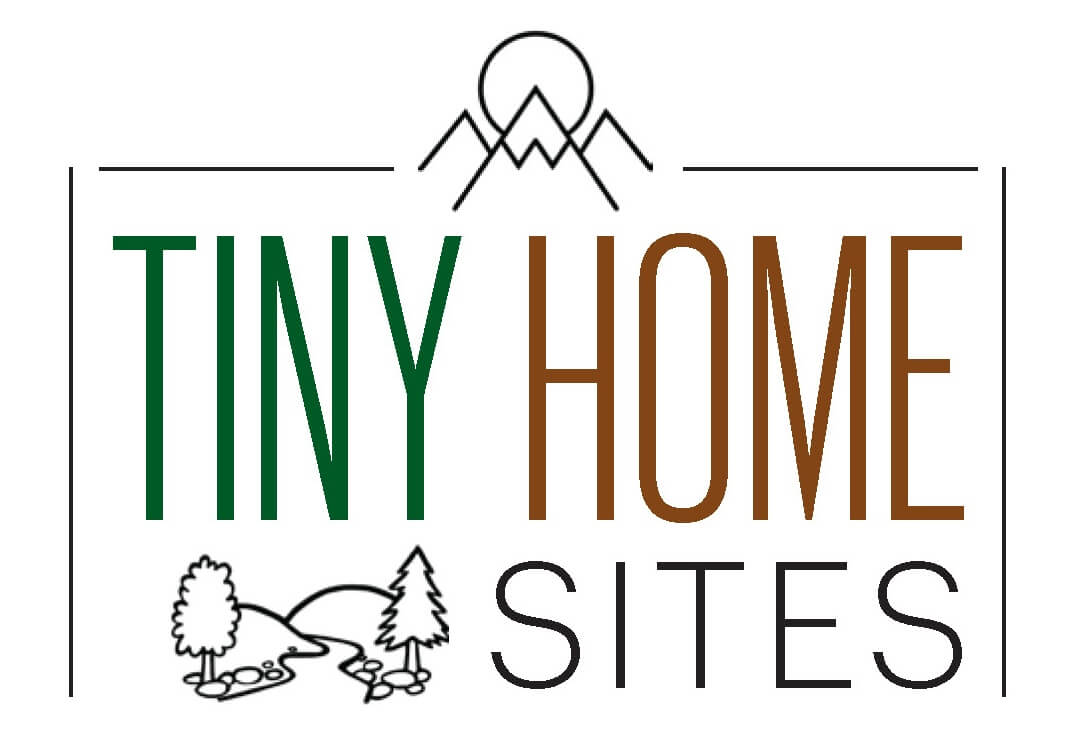
AT AROUND 400 square feet or less, tiny homes can be attractive vacation rentals in natural settings. One company that specializes in them is Postcard Cabins, acquired by Marriott, with approximately 12-by-17-foot retreats at 29 U.S. sites nestled in woods not far from major urban areas. A queen bed, kitchenette and bathroom all fit in a small space. One of the sites is Postcard Cabins Hocking Hills in Nelsonville, Ohio, an hour from Columbus. A stay there (from about $150 per night) provides easy access to a lovely state park, with trails leading to waterfalls and caves.

Postcard Cabins Hocking Hills in Ohio
“Cute” would be the first word that comes to mind to describe the six 350-square-foot units at Natchez Trace Tiny House Village in Tennessee. An hour outside Nashville, each tiny house comes with a name and detailed biography. Painted in multiple colors and flaunting floral bedspreads, Sadie is “a true lover of all things country music and adores the way the lyrics tell real stories”; Scandinavian-design Dala is a “sustainable traveler.” The village is part of a larger compound, including an 830-acre forested preserve. It is set on a 3-mile-long lake used for fishing, kayaking and boating. Stays start at about $170 per night.
The contemporary, yet rustic, cabins at Fireside Resort in Jackson Hole, Wyoming, are near some well-known mountain views. Head to the Snake River Overlook to see the spiky Tetons with the river curving below, made famous in Ansel Adams’ photography. And Grand Teton National Park is home to bison, moose and chirpy pikas. Fireside’s cabins include a king-size bed, kitchenette and fireplace. Stays are pricey: about $1,000 per night.
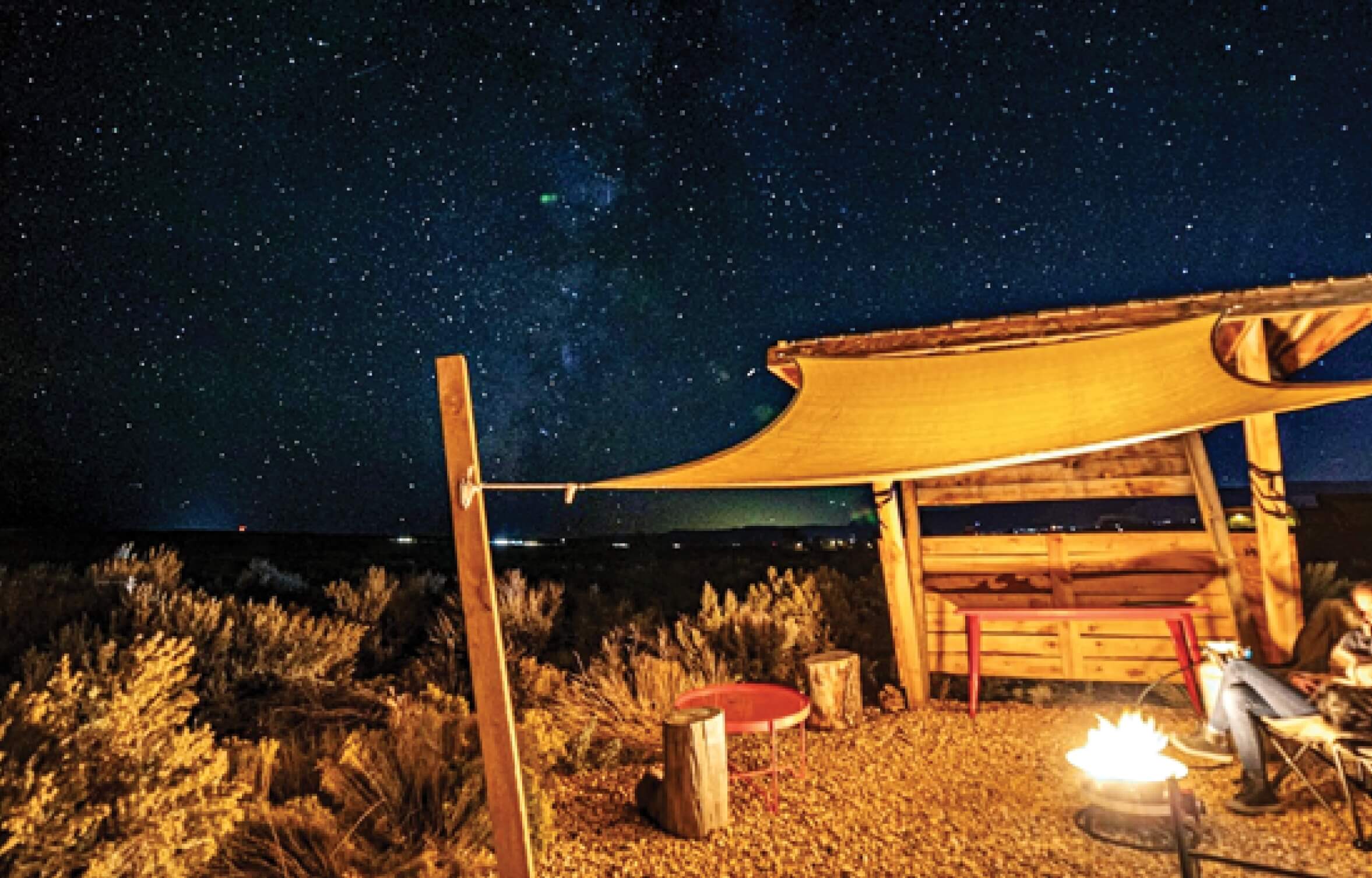

Dark Sky RV park in Kanab, Utah

SOME RV PARKS now offer the kind of amenities and concierge service usually found at hotels.
Dark Sky RV, in Kanab, Utah, calls itself a “boutique RV” resort. “And it’s important for us to stay small,” says co-owner Britt Roth, “because it allows us to give that high-end touch of hospitality that I think so many RV parks are missing.” The bathhouse features heated floors and indoor/outdoor showers, but the real luxury here might be the sweep of the Milky Way shining in the dark night sky. The resort turns lights off at 10 p.m. to avoid light pollution. Guests can also book private “star parties” led by Stellar Vista Observatory that help them identify constellations and significant celestial bodies. Overnight RV parking is $80.

In Idaho, River’s Fork Lodge’s seven RV sites are front-row seats to the Salmon River. “You can throw a rock from your RV to the river, it’s that close,” says co-owner Christian Stephens. A marker notes that in 1805, the Lewis and Clark expedition stood on this site as the explorers plotted their route to the Pacific Ocean. “Everyone’s in a good mood because they’re outside, on the river,” says Narda Pitkethly, from Ketchum, Idaho.
Overnight RV parking starts at about $45.
Amy Alipio is a former managing editor of National Geographic Travel.
CAMPING MADE EASIER
If you must rough it, make it less taxing:

A waterproof backpack will keep your stuff dry. A roll top allows you to adjust the bag’s size, depending on how much you pack.

Don’t forget a refillable water bottle or canteen, a first aid kit, insect repellent, sunscreen, a good hat and sunglasses.

A headlamp can be easier to use than a flashlight, especially for nighttime bathroom trips.

A solar-powered charging kit will soak up the sun’s rays and convert them into energy for your phone—good to have on hand for navigation or emergencies. Another option is a backup battery.

An old-school paper map is handy in case you lose cellular service. — Elise Ceyral
Courtesy Huttopia (2); Courtesy Sandy Pines Campground (2); Courtesy Costanoa; Courtesy AutoCamp; Courtesy Andrew Ackerman for Nat Hab; Courtesy Rustic Rook Resort; Courtesy Fireside Resort; Courtesy Postcard Cabin; Courtesy Dark Sky (2)